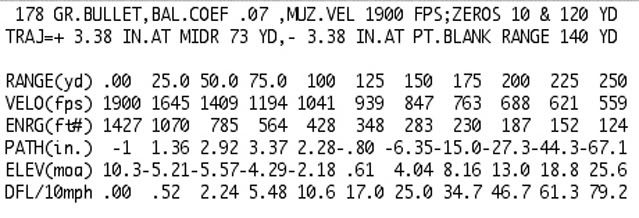galamb
58 Cal.
But how do you take advantage of that extra range?
Mount telescopic optics on your rifle - bambi looks awful small in a semi-buckhorn sight at 145.
Use a laser range finder?
If you mis-estimate by 25 yards which is not difficult to do even at distances significantly under 100 yards and you are aiming for the center of a (barely) 8" kill zone - which is even more important that you get a near through and through in the vitals with the diminished retained energy at that range.
I'm not saying it's not possible, just think it's not the best advice to be putting out to 1) a novice who is still thinking "center fire" 2) the guy/gal who takes a couple test shots after taking the rifle out of the cabinet the day before opening day 3) those who don't practice much beyond 50 yards - outside of maybe shooting at 100 yard target, off a rest, on a nice sunny/calm summer day.
I have been shooting for a good number of years and wouldn't attempt a shot with a muzzle loader beyond 75 yards.
Why? because I don't practice them - and keep practicing them until I KNOW how the ball is going to react that far out under just about every conceivable condition - weather/wind/light etc and from numerous shooting positions.
If that's how you hunt and get proficient at it that is one thing. It's quite another if you are a 50 yard hunter but decide to take that 130 yard shot because "some guy on a forum" said it was totally doable..
Mount telescopic optics on your rifle - bambi looks awful small in a semi-buckhorn sight at 145.
Use a laser range finder?
If you mis-estimate by 25 yards which is not difficult to do even at distances significantly under 100 yards and you are aiming for the center of a (barely) 8" kill zone - which is even more important that you get a near through and through in the vitals with the diminished retained energy at that range.
I'm not saying it's not possible, just think it's not the best advice to be putting out to 1) a novice who is still thinking "center fire" 2) the guy/gal who takes a couple test shots after taking the rifle out of the cabinet the day before opening day 3) those who don't practice much beyond 50 yards - outside of maybe shooting at 100 yard target, off a rest, on a nice sunny/calm summer day.
I have been shooting for a good number of years and wouldn't attempt a shot with a muzzle loader beyond 75 yards.
Why? because I don't practice them - and keep practicing them until I KNOW how the ball is going to react that far out under just about every conceivable condition - weather/wind/light etc and from numerous shooting positions.
If that's how you hunt and get proficient at it that is one thing. It's quite another if you are a 50 yard hunter but decide to take that 130 yard shot because "some guy on a forum" said it was totally doable..





